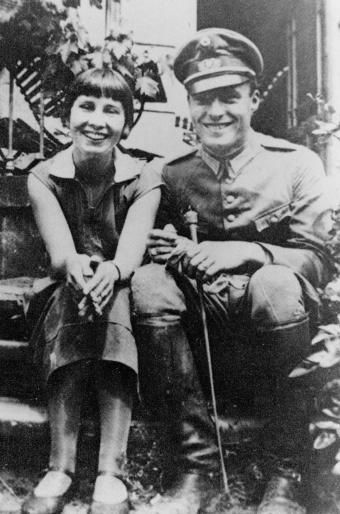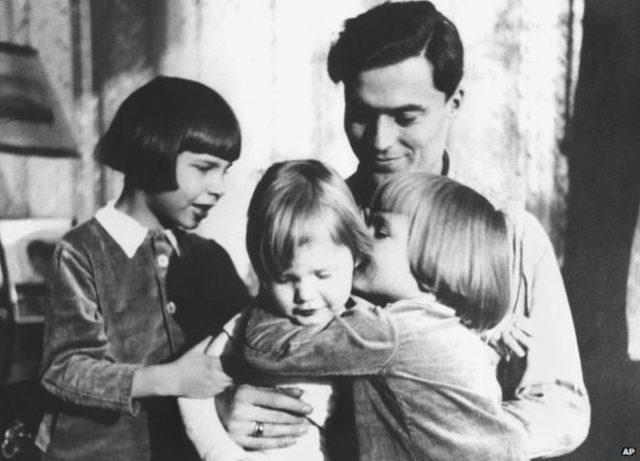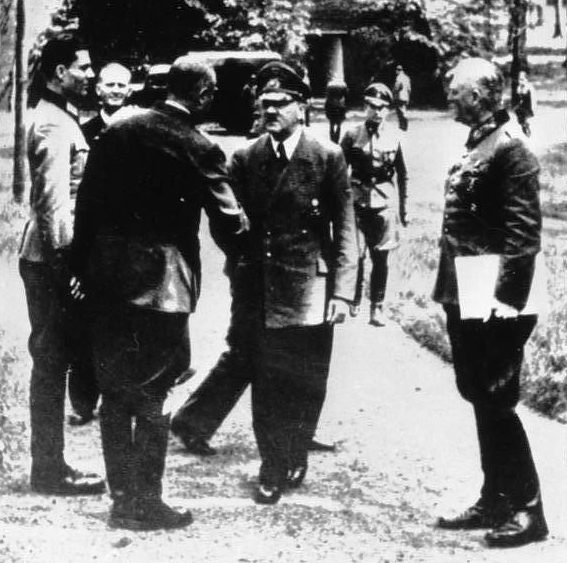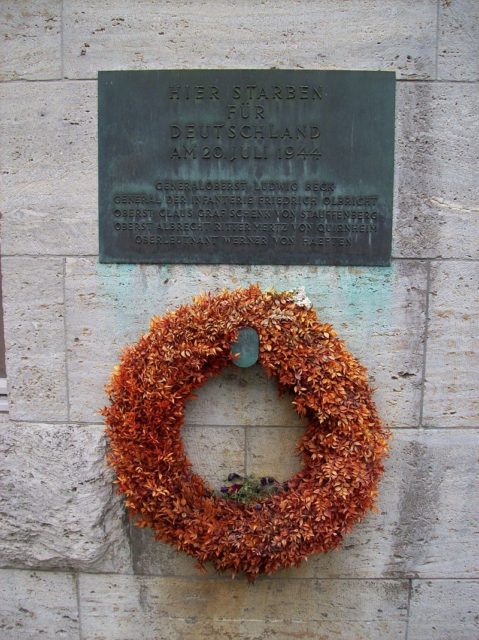
As early as September 1942 von Stauffenberg was considering Hans Georg Schmidt von Altenstadt, as a replacement for Hitler. From the beginning of September 1943 until 20 July 1944, von Stauffenberg was the driving force behind the plot to assassinate Hitler and take control of Germany. His resolve, organisational abilities, and radical approach put an end to inactivity caused by doubts and long discussions on whether military virtues had been made obsolete by Hitler’s behaviour. With the help of his friend Henning von Tresckow, he united the conspirators and drove them into action.
Stauffenberg was aware that, under German law, he was committing high treason. He openly told young conspirator Axel von dem Bussche in late 1943, “ich betreibe mit allen mir zur Verfügung stehenden Mitteln den Hochverrat…” He justified himself to Bussche by referring to the right under natural law to defend millions of people’s lives from the criminal aggressions of Hitler.
Only after the conspirator General Helmuth Stieff on 7 July 1944 had declared himself unable to assassinate Hitler on a uniforms display at Klessheim castle near Salzburg, Stauffenberg decided to personally kill Hitler and to run the plot in Berlin. By then, Stauffenberg had great doubts about the possibility of success. Tresckow convinced him to go on with it even if it had no chance of success at all, “The assassination must be attempted. Even if it fails, we must take action in Berlin”, as this would be the only way to prove to the world that the Hitler regime and Germany were not one and the same and that not all Germans supported the regime.
Stauffenberg’s part in the original plan required him to stay at the Bendlerstraße offices in Berlin, so he could phone regular army units all over Europe in an attempt to convince them to arrest leaders of Nazi political organisations such as the Sicherheitsdienst (SD) and theGestapo. Unfortunately, when General Helmuth Stieff, Chief of Operation at Army High Command, who had regular access to Hitler, backtracked from his earlier commitment to assassinate Hitler, Stauffenberg was forced to take on two critical roles: kill Hitler far from Berlin and trigger the military machine in Berlin during office hours of the very same day. Beside Stieff, he was the only conspirator who had regular access to Hitler (during his briefings) by mid-1944, as well as being the only officer among the conspirators thought to have the resolve and persuasiveness to convince German military leaders to throw in with the coup once Hitler was dead. This requirement greatly reduced the chance of a successful coup.

After several unsuccessful tries by Stauffenberg to meet Hitler, Göring and Himmler when they were together, he went ahead with the attempt at Wolfsschanze on 20 July 1944. Stauffenberg entered the briefing room carrying a briefcase containing two small bombs. The location had unexpectedly been changed from the subterranean Führerbunker to Albert Speer’s wooden barrack/hut due to it being a hot summer’s day. He left the room to arm the first bomb with specially adapted pliers, a task made difficult because he had lost his right hand and had only three fingers on his left. A guard knocked and opened the door, urging him to hurry as the meeting was about to begin. As a result, Stauffenberg was able to arm only one of the bombs. He left the second bomb with his aide-de-camp, Werner von Haeften, and returned to the briefing room, where he placed the briefcase under the conference table, as close as he could to Hitler. Some minutes later, he excused himself and left the room. After his exit, the briefcase was moved by Colonel Heinz Brandt.

When the explosion tore through the hut, Stauffenberg was convinced that no one in the room could have survived. Although four people were killed and almost all survivors were injured, Hitler himself was shielded from the blast by the heavy, solid-oak conference table leg and was only slightly wounded.
Stauffenberg and Haeften quickly left and drove to the nearby airfield. After his return to Berlin, Stauffenberg immediately began to motivate his friends to initiate the second phase: the military coup against the Nazi leaders. When Joseph Goebbels announced by radio that Hitler had survived and later, after Hitler himself personally spoke on the state radio, the conspirators realised that the coup had failed. They were tracked to their Bendlerstrasse offices and overpowered after a brief shoot-out, during which Stauffenberg was wounded in the shoulder.
In an attempt to save his own life, co-conspirator Generaloberst Friedrich Fromm, Commander-in-Chief of the Replacement Army present in the Bendlerblock (Headquarters of the Army), charged other conspirators in an impromptu court martial and condemned the ringleaders of the conspiracy to death. Colonel Claus von Stauffenberg, his aide 1st Lieutenant Werner von Haeften, GeneralFriedrich Olbricht, and Colonel Albrecht Mertz von Quirnheim were executed before 1:00 in the morning (21 July 1944) by a makeshift firing squad in the courtyard of the Bendlerblock, which was lit by the headlights of a truck.

Stauffenberg was third in line to be executed, with Lieutenant von Haeften after. However, when it was Stauffenberg’s turn, Lieutenant von Haeften placed himself between the firing squad and Stauffenberg, and received the bullets meant for Stauffenberg. When his turn came, Stauffenberg spoke his last words, “Es lebe unser heiliges Deutschland!” (“Long live our sacred Germany!“) Others say the last words were: “Es lebe das geheime Deutschland!” (“Long live the secret Germany!“) Fromm ordered that the executed officers (his former co-conspirators) receive an immediate burial with military honours in the Alter St.-Matthäus-Kirchhof in Berlin’s Schöneberg district. The next day, however, Stauffenberg’s body was exhumed by the SS, stripped of his medals and insignia, and cremated. Stauffenberg’s family had already fled the country.